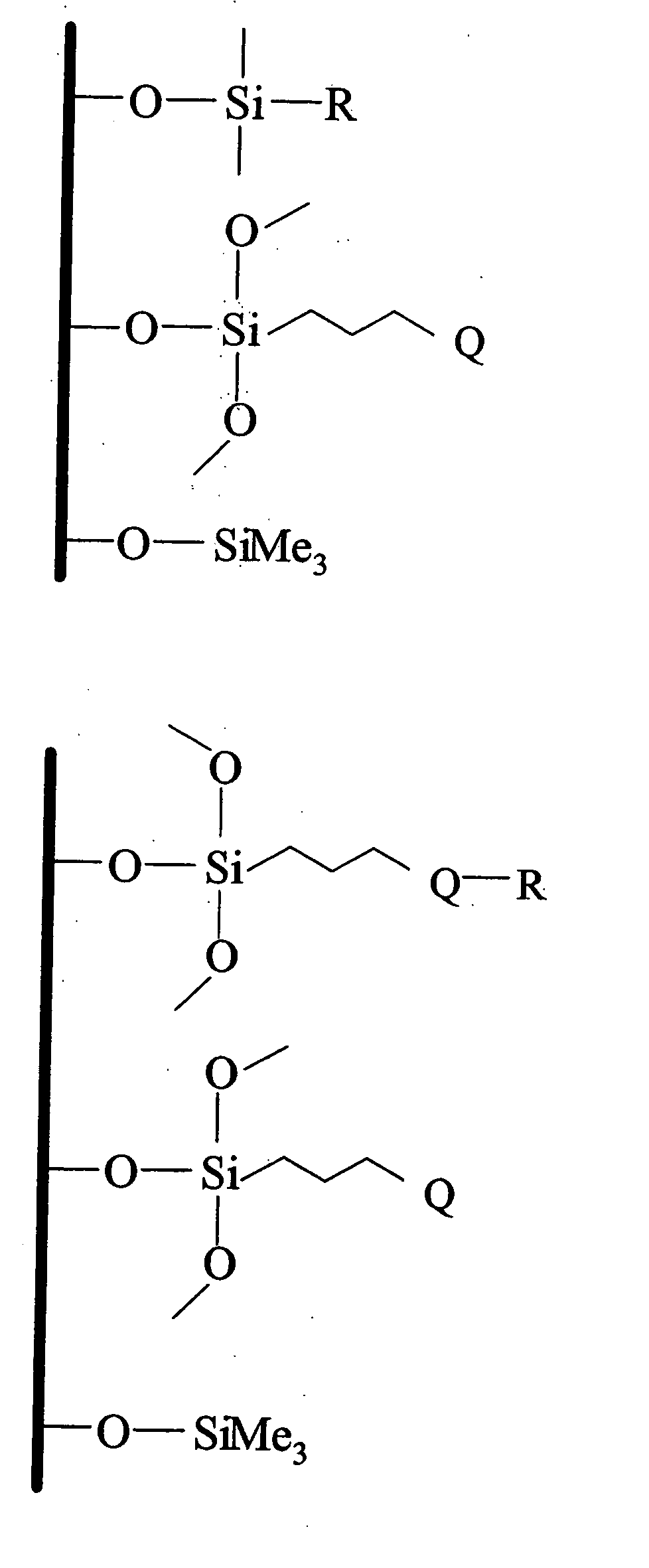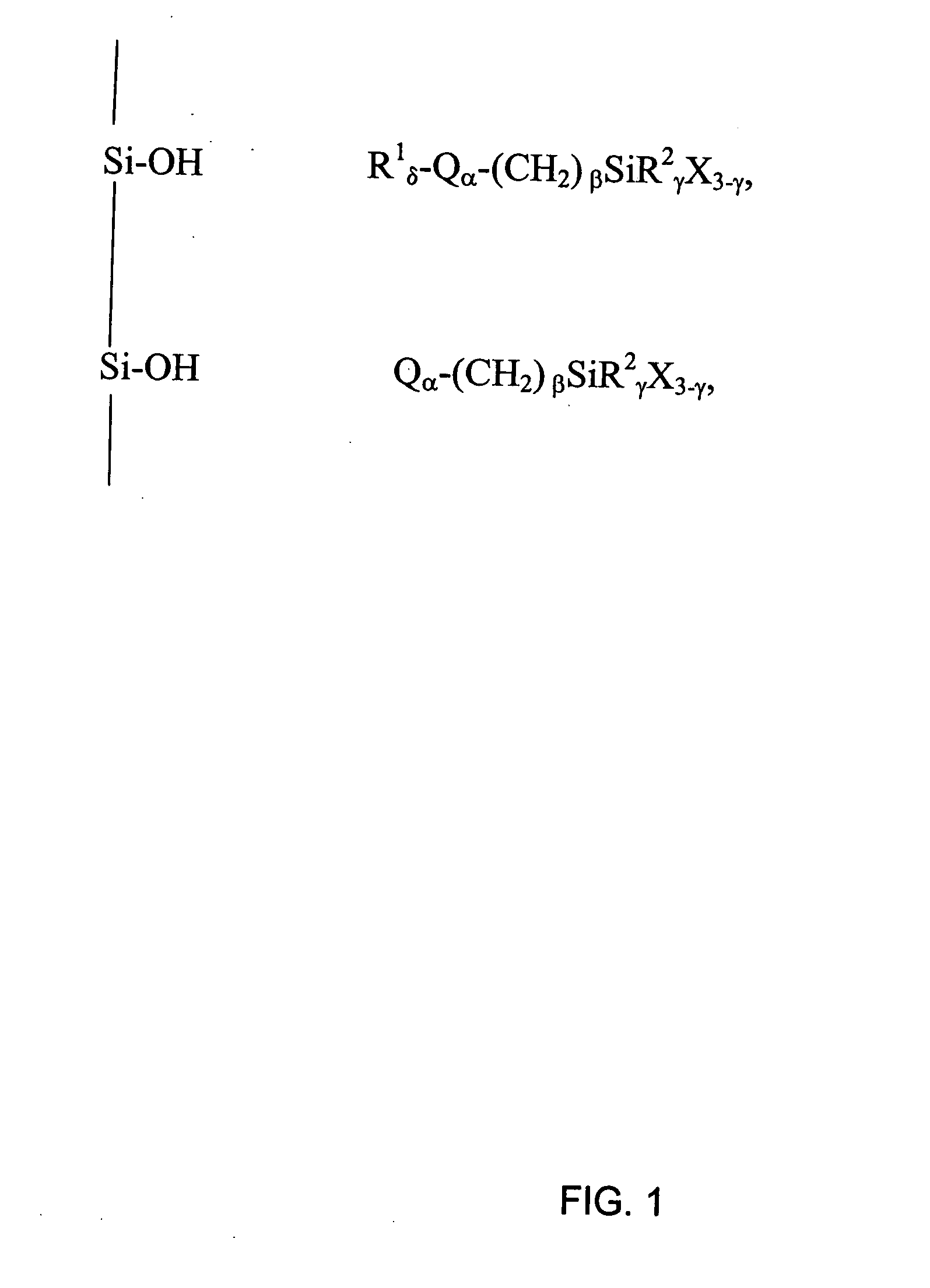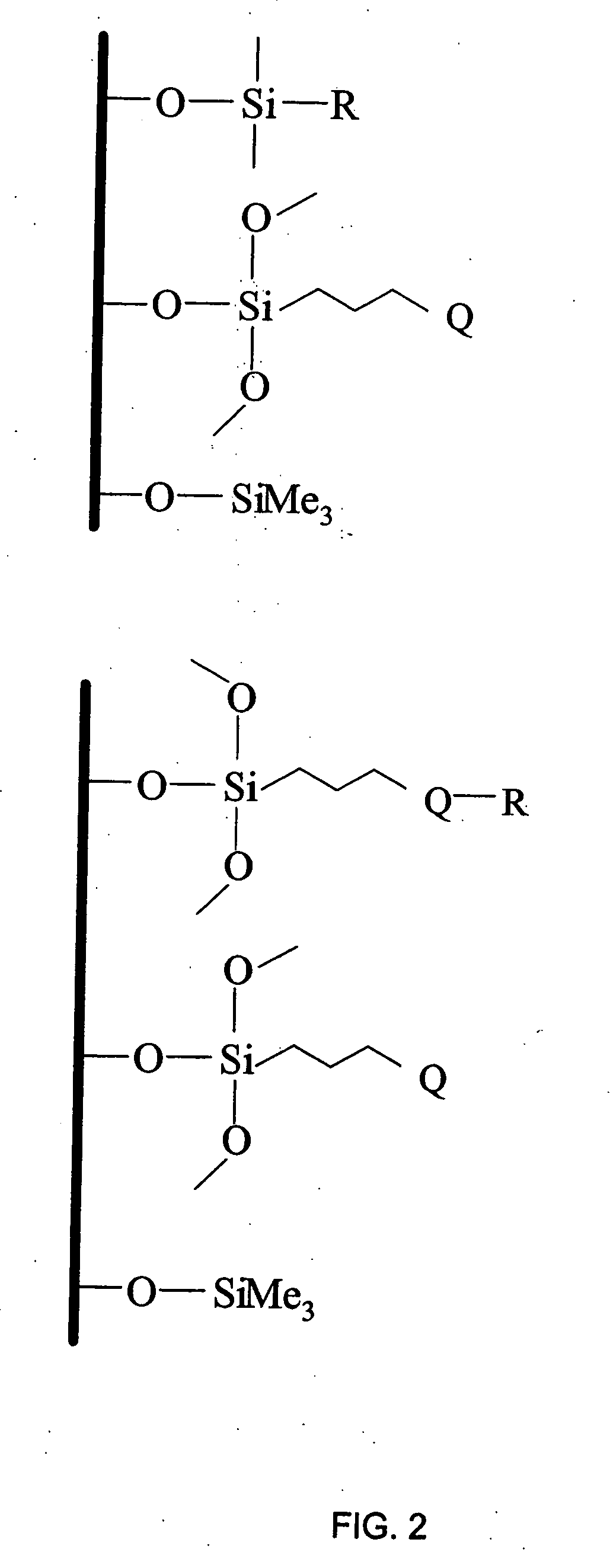Polar-modified bonded phase materials for chromatographic separations
a technology of polar modification and bonded phase, which is applied in the direction of filtration separation, other chemical processes, separation processes, etc., can solve the problems of batch to batch reproducibility of bonded phase, inability to complete the removal of all surface silanols, and low stability of bonded layers, etc., to enhance batch to batch reproducibility
- Summary
- Abstract
- Description
- Claims
- Application Information
AI Technical Summary
Benefits of technology
Problems solved by technology
Method used
Image
Examples
example 1
Preparation of Trimethoxysilylpropylacetamide
[0161] A three-neck round-bottomed flask, equipped with a mechanical stirrer, a refluxing condenser and a dropping funnel, was charged with 3-aminopropyltrimethoxysilane (18 gram, Gelest Inc.), toluene (40 mL, Aldrich) and triethylamine (13 gram, Aldrich). Stirring was started, and an appropriate acyl chloride such as acetyl chloride (18 mL, Aldrich) was added dropwise to the flask. The mixture was stirred at room temperature under an argon atmosphere for 16 hours.
example 2
Preparation of Alkyl and Polar Modified Bonded Phases
[0162] This example illustrates a general preparation method for alkyl and polar-modified bonded phases. A 5-μm particle size silica gel was allowed to equilibrate in a desiccator for three weeks over a saturated aqueous solution of lithium chloride. A 10 gram sample of the equilibrated silica gel was suspended in 100 mL of xylene, and a 50% molar excess of a long chain trifunctional silane and pyridine (a calculated equivalent of 12 μmole of reagent per square meter of silica surface) was added. The suspension was mechanically stirred and refluxed under argon atmosphere for twenty-four hours. The mixture was filtered and washed well with xylene, methylene chloride, tetrahydrofuran, acetone, methanol and a water-methanol mixture in order to promote the hydrolysis of the remaining leaving groups of the trifunctional silane.
[0163] The alkyl or polar-modified bonded phase was then hydrolyzed with acetonitrile / tetrahydrofuran / water ...
examples 3-11
[0168] These examples illustrate preparing phases 1-9 using the procedure described in Example 2. The silanes used to construct each phase were presented above in Table 1. For each phase, the procedure of Example 2 was used with the following exceptions: [0169] Example 3 (Phase 1): the long-chain silane is N-(3-trimethoxysilyl)propylpalmitamide and the short-chain silane is N-(3-(trimethoxysilyl)propylacetamide. [0170] Example 4 (Phase 2): the long-chain silane is O-octyl-N-(triethoxysilylpropyl)urethane and the short-chain silane is N-(3-(trimethoxysilyl)propylacetamide. [0171] Example 5 (Phase 3): the long-chain silane is N-(3-trimethoxysilyl)propylpalmitamide and the short-chain silane is the endcapping reagent trimethylchlorosilane. [0172] Example 6 (Phase 4): the long-chain silane is n-octadecyltrichlorosilane and the short-chain silane is 3-glycidoxytrimethoxysilane. [0173] Example 7 (Phase 5): the long-chain silane is n-octyltrichlorosilane and the short-chain silane is 3-gly...
PUM
| Property | Measurement | Unit |
|---|---|---|
| particle size | aaaaa | aaaaa |
| retention time | aaaaa | aaaaa |
| retention factor | aaaaa | aaaaa |
Abstract
Description
Claims
Application Information
 Login to View More
Login to View More - R&D
- Intellectual Property
- Life Sciences
- Materials
- Tech Scout
- Unparalleled Data Quality
- Higher Quality Content
- 60% Fewer Hallucinations
Browse by: Latest US Patents, China's latest patents, Technical Efficacy Thesaurus, Application Domain, Technology Topic, Popular Technical Reports.
© 2025 PatSnap. All rights reserved.Legal|Privacy policy|Modern Slavery Act Transparency Statement|Sitemap|About US| Contact US: help@patsnap.com



